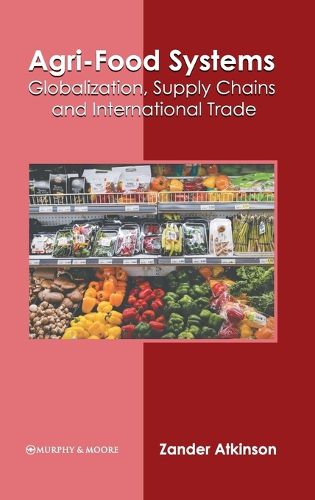Readings Newsletter
Become a Readings Member to make your shopping experience even easier.
Sign in or sign up for free!
You’re not far away from qualifying for FREE standard shipping within Australia
You’ve qualified for FREE standard shipping within Australia
The cart is loading…






Agri-food systems include primary production of both food and non-food agricultural products. It also includes aspects like food storage, consumption and disposal, aggregation, marketing, transportation, post-harvest management and processing, and distribution. Food systems within agri-food systems include food items produced from livestock and crop production. The food products can be obtained from traditional sources such as fisheries, aquaculture and forestry, as well as products from nontraditional sources like synthetic biology. Globalization of the agri-food systems is a mega-trend having significant nutritional implications. It entails shifting supply-chain structures, increasing levels of vertical integration, as well as new standards for food quality and safety. Agricultural trade is critical to the long-term viability of local and global food systems. International trade has enabled the transfer of food from surplus to deficit areas, while increasing the availability of a variety of products. This book outlines the role of globalization, supply chains and international trade on agri-food systems in detail. It is appropriate for those seeking detailed information on these systems.
$9.00 standard shipping within Australia
FREE standard shipping within Australia for orders over $100.00
Express & International shipping calculated at checkout
Agri-food systems include primary production of both food and non-food agricultural products. It also includes aspects like food storage, consumption and disposal, aggregation, marketing, transportation, post-harvest management and processing, and distribution. Food systems within agri-food systems include food items produced from livestock and crop production. The food products can be obtained from traditional sources such as fisheries, aquaculture and forestry, as well as products from nontraditional sources like synthetic biology. Globalization of the agri-food systems is a mega-trend having significant nutritional implications. It entails shifting supply-chain structures, increasing levels of vertical integration, as well as new standards for food quality and safety. Agricultural trade is critical to the long-term viability of local and global food systems. International trade has enabled the transfer of food from surplus to deficit areas, while increasing the availability of a variety of products. This book outlines the role of globalization, supply chains and international trade on agri-food systems in detail. It is appropriate for those seeking detailed information on these systems.